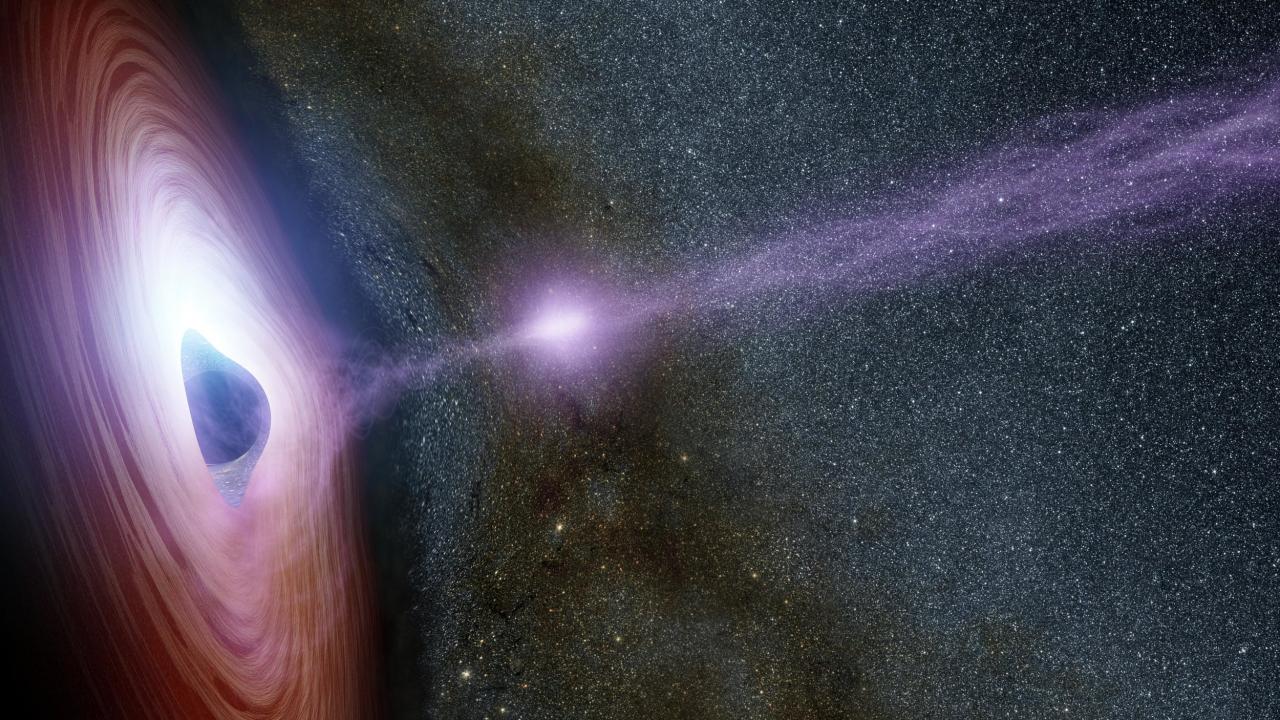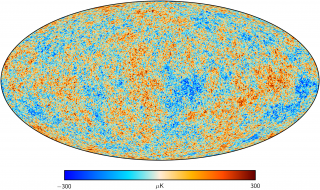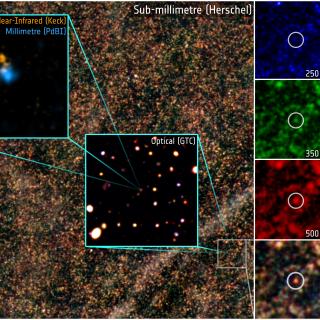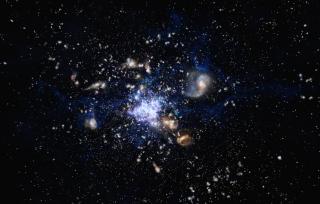General
Los núcleos activos de galaxias (AGN por sus siglas en inglés) se caracterizan por una potente emisión proveniente de una región muy compacta (sólo pocos pcs) en el centro de la galaxia. Los "blazars" son una categoría de AGNs, caracterizados por mostrar una alta luminosidad en un amplio rango de frecuencia, desde radio a altas energías (rayos X y gamma), y también variabilidad extrema y alta polarización en el visible, infrarrojo cercano y radiosondas. La distribución espectral de energía muestra dos máximos: uno a baja frecuencia, de radio al optico, y a veces rayos X; y el de alta frecuencia de rayos X a gamma. El escenario más aceptado para explicar estas propiedades sugiere que la emisión proviene de un chorro de partículas aceleradas a velocidades relativístas, muy alineados con la linea de visión y originandose en las proximidades de un agujero negro supermasivo. En estas condiciones, la emisión del chorro es fuertemente amplificada y facilmente supera la del resto de la galaxia.
Hoy en día, un numero considerable de "blazars" está siendo monitorizado diariamente por los observatorios espaciales de altas energías, Fermi y AGILE. Los "blazars" también destacan en radiación gamma de muy alta energía, donde llevan a cabo las observaciones los telescopios Cherenkov desde Tierra. Por tanto, programas de seguimiento simultáneo son necesarios para aprender mas acerca del comportamiento impredecible en este tipo de AGNs, igualmente que para entender en más detalle los procesos físicos que tienen lugar.
En este proyecto se cubren dos aspectos: por una parte, se pretende proporcionar observaciones de seguimiento en los rangos visibles e infrarrojos usando los telescopios disponibles en los Observatorios del Teide y del Roque de los Muchachos. Esta obseraciones se llevan a cabo dentro del marco de una colaboración más extensa, la GASP-WEBT, que incluye alrededor de otros 30 observatorios. Esta es la unica forma de capturar todas las fases (subida, pico y caida) de los aumentos de flujo, o fulguraciones, que son criticas para los modelos teoricos para las altas energias. Por otra parte, se analizarán largas series temporales (varios años) tomadas en diferentes rangos de energia, buscando correlaciones entre bandas y también cualquier tipo de variaciones periodicas que puedan indicar precesión del chorro, presencia de un sistema binario de agujeros negros o cualquier otro mecanismo. Igualmente se analizarán distintos tipos de fulguraciones que debido a lo impredecible que aparecen se hará en terminos estadisticos.
Miembros
Resultados
- Se confirma que la morfología de la galaxia huésped del núcleo activo Pks 1502+036 corresponde a un tipo elíptico (D'Ammando et al 2018). Este núcleo activo es un potente emisor de radiación gamma lo cual implica que debe albergar un agujero negro muy masivo, contrario al tipo morfológico asociado con la clasificación espectroscopica de la galaxia.
- Primera medida del desplazamiento al rojo del blazar PGC 2402248 a partir de espectroscopia obtenida con OSIRIS en el GTC (Becerra et al, 2018, ATel 11621). Este objeto había sido detectado previamente por MAGIC como fuerte emisor en rayos gamma extremos (E >100GeV)
- El análisis de curvas de luz en el rango visible para dos "blazars" revela un comportamiento periódico, con una cadencia de pocos años.



